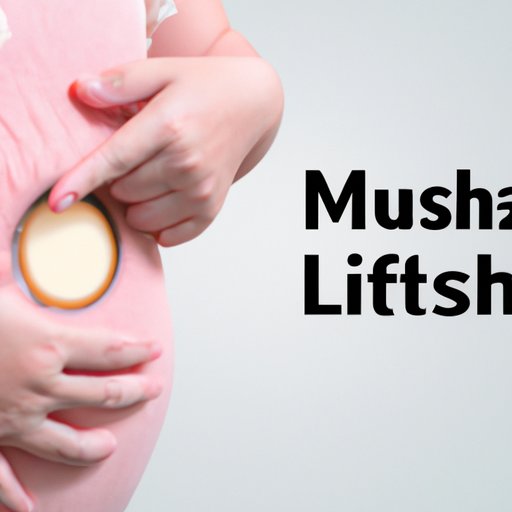
Introduction
As a breastfeeding mother, experiencing a clogged milk duct may not be uncommon. However, it can be uncomfortable and painful. A clogged milk duct occurs when there is a blockage or plug in the milk duct, which prevents milk from flowing freely. This can lead to breast engorgement, soreness, and even infection. The objective of this article is to provide a comprehensive guide on how to identify, treat and prevent clogged milk ducts.
Step-by-Step Guide
The first step to unclogging a milk duct is identifying the signs. Painful lump(s), redness, warm to the touch, and a decreased milk supply in one breast can all present when a milk duct is clogged. Sometimes, there is no visible sign except a decrease in milk flow. Here are some methods to try:
Massage and Hand Expression
Gently massaging the affected area while expressing milk can help move the blockage towards the nipple. Use your fingertips or knuckles in a circular motion and work your way towards the nipple. Alternatively, hand expression can help because it removes milk faster than a pump while increasing milk production.
Warm Compress
Place a warm compress on the affected area for 10-15 minutes before expressing milk. This can help unclog milk ducts by opening the milk ducts and making the blockage easier to dislodge.
Breastfeed in Different Positions
Changing breastfeeding positions can help drain milk from different parts of the breast. For example, a baby nursing in the “football hold” position can help move the milk toward the outside of the breast while a baby nursing in the “laid back” position allows gravity to work in your favor.
Self-care Tips to Prevent Clogged Milk Ducts in the Future
Drinking plenty of fluids, getting enough rest, and avoiding tight clothing can help prevent the occurrence of a clogged milk duct.
Natural Remedies
Heat therapy can be helpful to soothe soreness and unclog milk ducts. Placing a warm washcloth on the affected area or taking a hot shower can relieve tension and discomfort. Massaging the breast while using heat therapy can also help dislodge the blockage.
Specific essential oils such as lavender, chamomile, or geranium oil can also help unclog milk ducts and relieve pain. Adding a few drops of these essential oils to a carrier oil like coconut oil before massaging the breast can provide relief. It’s important to note that not all essential oils are safe for breastfeeding mothers; consult with your healthcare provider before using any essential oils.
Breastfeeding Tips
Positioning your baby correctly is key to ensuring milk flows freely from the breast. A baby’s nose should be in line with the nipple, and their mouth should be wide open before latching on. This ensures the breast is emptying evenly. Frequency is also important, and a baby should nurse eight to twelve times a day.
If milk flow is not occurring, try multiple techniques like gently massaging the breast or switching sides to encourage milk production. Additionally, pumping can help empty the breast after breastfeeding and increase milk supply.
Blocked Duct vs. Mastitis
While a blocked duct can lead to mastitis (an infection of the breast), not all clogged milk ducts result in an infection. Mastitis may occur when a clogged milk duct becomes infected with bacteria, resulting in fever and flu-like symptoms. If a mother is experiencing these symptoms, it is essential to seek medical attention immediately.
Prevention Tips
Avoid wearing tight-fitting clothing, including tight bras and tops, that may impede milk flow through the milk ducts. It’s also important to use a breast pump correctly because improper use can cause clogged milk ducts. Lastly, managing stress is essential because stress can impact the letdown of milk.
When to Call a Lactation Consultant
If the above methods are not relieving a clogged milk duct in just a couple of days, seek help from a lactation consultant. Lactation consultants are qualified professionals who can work with mothers to resolve breastfeeding issues. They can help determine if a mother has a clogged milk duct, mastitis, or another condition affecting breastfeeding and devise an appropriate care plan.
Conclusion
Dealing with clogged milk ducts can be challenging for breastfeeding mothers, but it is essential to seek help immediately when necessary. This article has provided breastfeeding mothers with a comprehensive guide on identifying, treating, and preventing clogged milk ducts. The natural remedies, breastfeeding tips, and prevention methods provided here can ease the discomfort and help the milk flow freely through the milk ducts.
Remember that it’s essential to work with a lactation consultant or other healthcare providers when clogged milk ducts are persistent. Breastfeeding is a beautiful bonding experience between mother and child, and with the help and support of professionals and loved ones, mothers give their infants the best possible nourishment.




